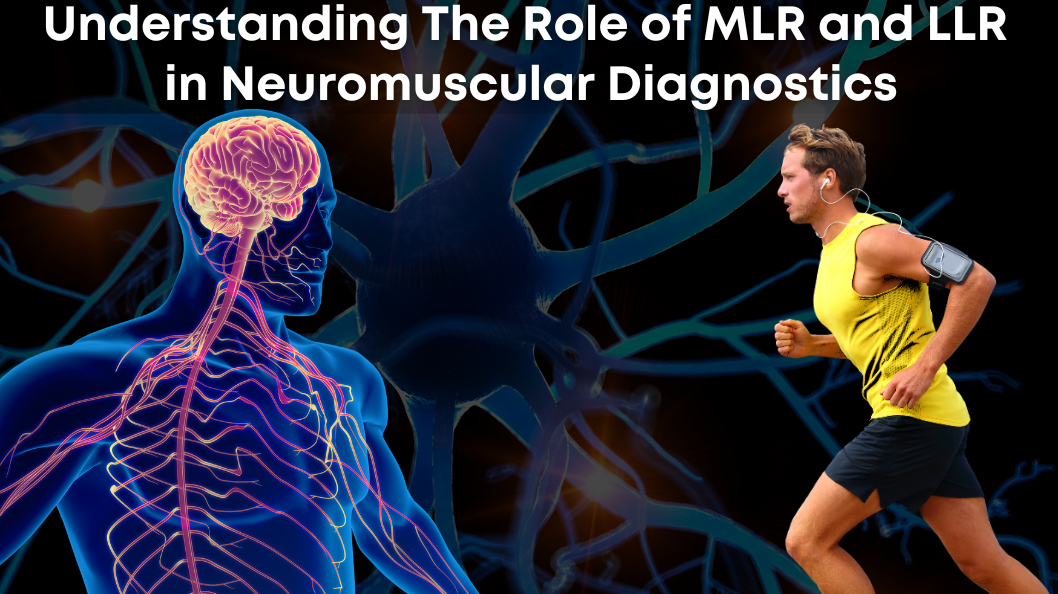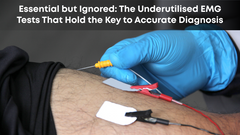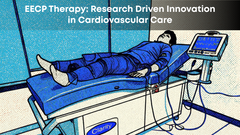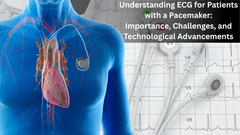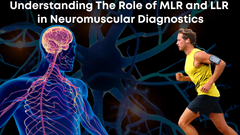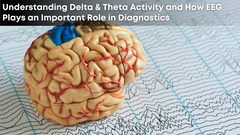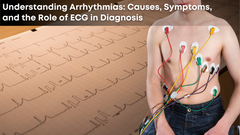Understanding the Role of MLR and LLR in Neuromuscular Diagnostics
The field of neuromuscular diagnostics has evolved significantly, enabling healthcare professionals to assess nerve conduction and muscle function with greater precision. Among the various techniques employed in electromyography (EMG), Middle Latency Response (MLR) and Late Latency Response (LLR) play crucial roles in evaluating peripheral and central nervous system pathways. These responses provide valuable insights into neurological disorders, helping clinicians diagnose and monitor conditions affecting the motor and sensory pathways. Clarity Medical, a leading innovator in diagnostic medical technology, has integrated MLR and LLR analysis into its EMG devices, enhancing the accuracy and efficiency of neuromuscular assessments.
Understanding MLR and LLR
Middle Latency Response (MLR)
MLR refers to the electrical response generated in the brainstem and thalamocortical regions approximately 10 to 50 milliseconds after a stimulus. It bridges the gap between short-latency and long-latency responses, helping in evaluating subcortical and cortical processing.
Key Features of MLR:
- Reflects central nervous system (CNS) activity beyond the early brainstem responses.
- Used to evaluate auditory and somatosensory pathways.
- Helpful in diagnosing multiple sclerosis, stroke, and auditory processing disorders.
- Assists in intraoperative monitoring to assess cortical function during surgery.
Late Latency Response (LLR)
LLR appears 50 to 200 milliseconds post-stimulus and is primarily associated with cortical activation and voluntary muscle control. LLR provides insights into motor control pathways, particularly those associated with excitability of the corticospinal and extrapyramidal tracts.
Key Features of LLR:
- Evaluates long-loop reflexes mediated by supraspinal structures.
- Used for assessing motor neuron diseases and Parkinson’s disease.
- Helps in diagnosing neuropathies and spinal cord injuries.
- Essential in rehabilitation studies for stroke and spinal cord injury patients.
How MLR and LLR are Analysed
Both MLR and LLR are assessed using electromyography (EMG) and evoked potential techniques, where electrical stimuli are delivered to peripheral nerves, and responses are recorded from muscles or the scalp.
Steps in MLR and LLR Analysis:
- Stimulus Application: An electrical pulse is delivered to a nerve (e.g., median nerve at the wrist).
- Response Recording: EMG electrodes capture the response from the targeted muscle or cortical regions.
- Latency Measurement: The time between stimulus onset and response onset is measured.
- Amplitude Assessment: The magnitude of the response is evaluated to detect abnormalities.
- Comparison with Normative Data: Patient results are compared with standard reference values to identify neurological impairments.
Why MLR and LLR are Analysed
The clinical utility of MLR and LLR extends to various neuromuscular and neurophysiological disorders. These responses are particularly valuable in early diagnosis, treatment monitoring, and rehabilitation assessment.
Primary Reasons for MLR and LLR Analysis:
- Early detection of neurological diseases such as multiple sclerosis and Parkinson’s disease.
- Assessment of nerve conduction abnormalities in diabetic neuropathy and Guillain-Barré syndrome.
- Monitoring neuroplasticity in patients undergoing neurorehabilitation post-stroke.
- Evaluating auditory and sensory processing disorders in both pediatric and adult populations.
How MLR and LLR are Used in Diagnostics
The application of MLR and LLR in clinical practice has brought transformative changes in the diagnosis and management of neurological disorders.
- Multiple Sclerosis (MS) Diagnosis: MLR helps in detecting CNS demyelination and conduction delays.
- Motor Neuron Disease Assessment: LLR is used to monitor the progression of diseases like amyotrophic lateral sclerosis (ALS).
- Spinal Cord Injury Rehabilitation: LLR assists in assessing functional recovery post-injury.
- Auditory Processing Disorders: MLR is used to evaluate the brain’s ability to process sounds, particularly in children with developmental delays.
Parkinson’s Disease Research: LLR abnormalities indicate dysfunction in the basal ganglia circuits.
How Clarity Medical’s EMG Devices Enhance MLR and LLR Analysis
Clarity Medical, with its expertise in neuromuscular diagnostics, has developed state-of-the-art EMG-NCS devices that seamlessly integrate MLR and LLR analysis. These devices offer:
- High-quality Signal Acquisition: Advanced filters minimize noise interference, ensuring accurate response detection.
- Automated Latency and Amplitude Measurement: Provides precise evaluation with minimal user intervention.
- Customizable Stimulus Settings: Allows clinicians to adjust stimulus parameters for different diagnostic needs.
- User-Friendly Interface and Data Interpretation Tools: Simplifies complex neurophysiological assessments.
- Portable and Compact Design: Enables use in various clinical and research settings.
The Impact of MLR and LLR in Modern Diagnostics
The integration of MLR and LLR in neuromuscular diagnostics has revolutionized early disease detection, treatment planning, and rehabilitation strategies. Clarity Medical’s EMG devices, equipped with cutting-edge technology, ensure that clinicians receive reliable and high-quality data for making informed medical decisions.
As neurological disorders continue to rise globally, MLR and LLR analysis will remain essential in neurodiagnostic, helping clinicians provide better patient outcomes and more effective treatment strategies. With Clarity Medical’s innovations, healthcare professionals can now harness these diagnostic tools with greater ease and accuracy, further advancing the field of electromyography.
Conclusion
MLR and LLR play a critical role in assessing neuromuscular and central nervous system functions, offering invaluable insights into various neurological disorders. Clarity Medical’s advanced EMG-NCS systems provide the precision, efficiency, and user-friendly experience needed for accurate diagnostics. By integrating MLR and LLR analysis into its devices, Clarity Medical continues to lead the way in enhancing neuromuscular assessments and improving patient care.


